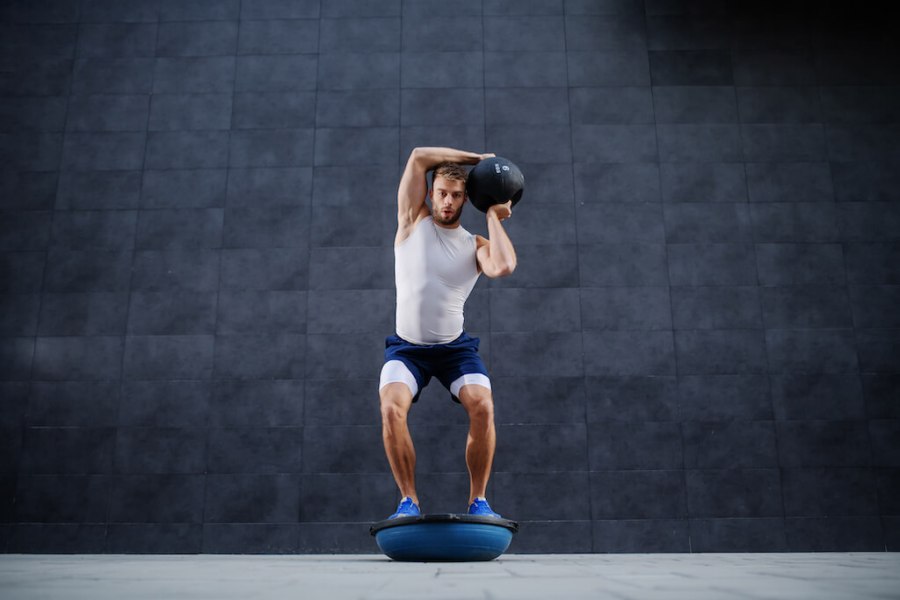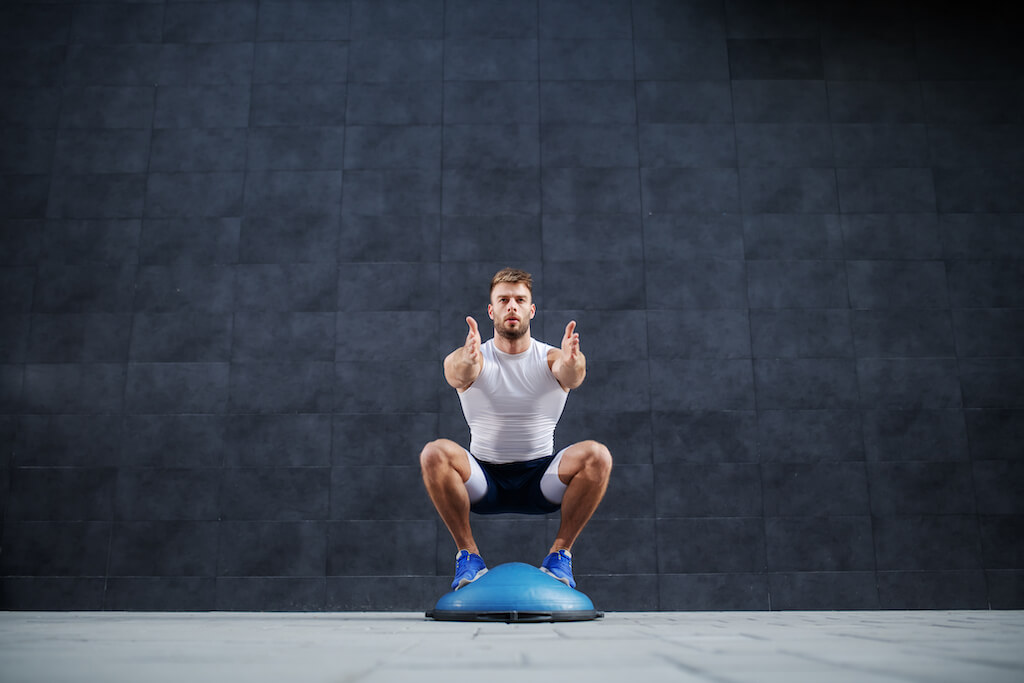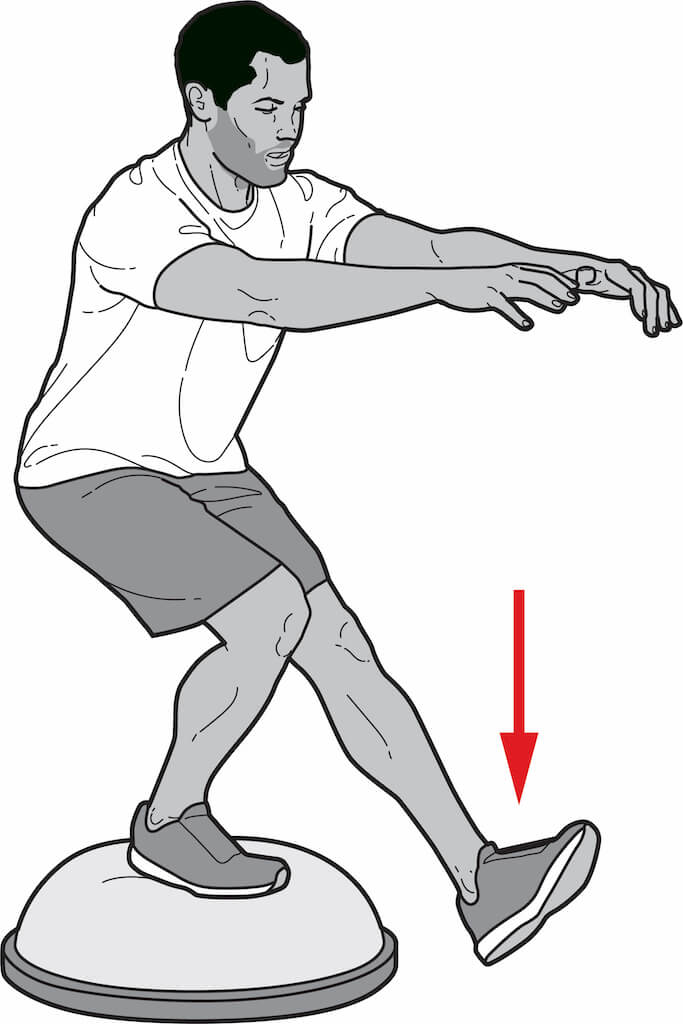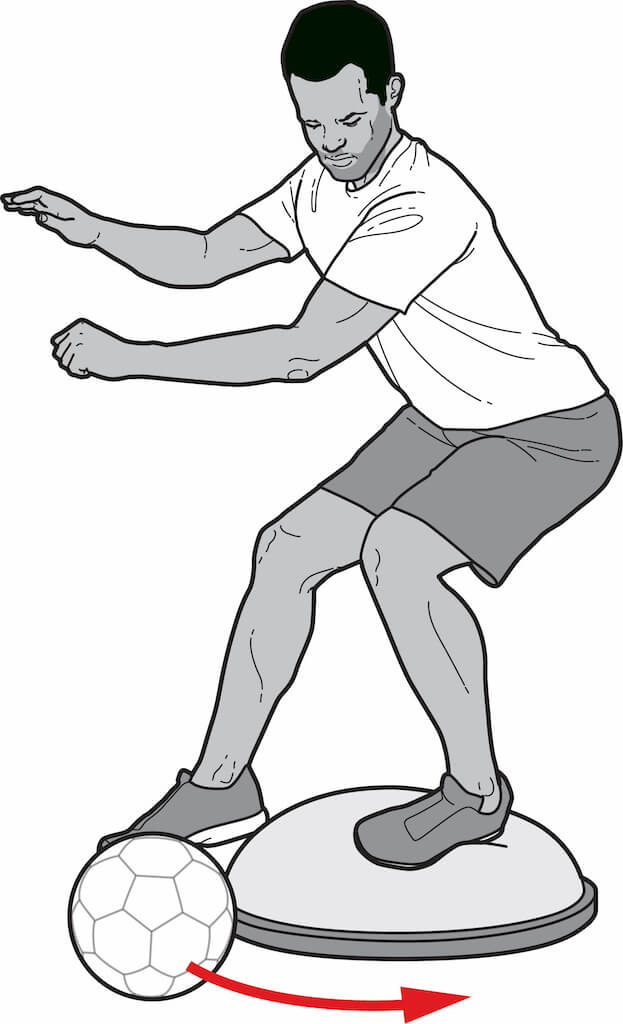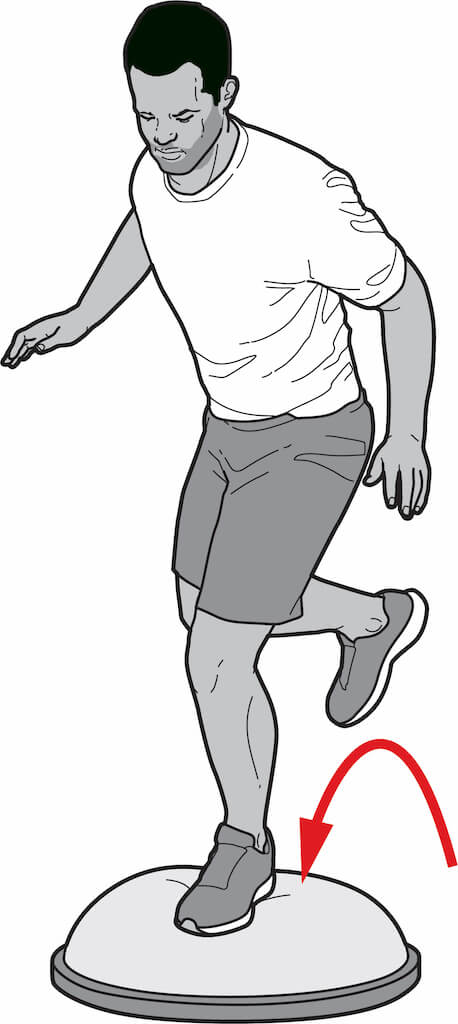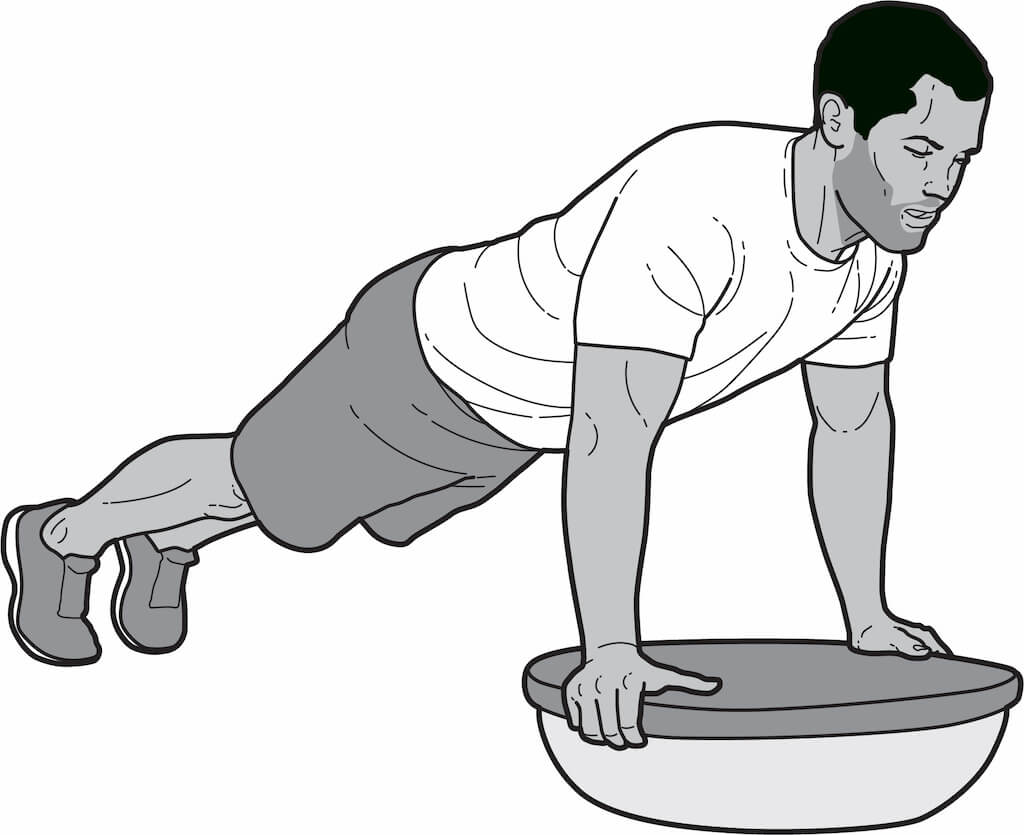More than simply being able to stand on one leg, good balance is central to athletic performance, injury prevention and even cognitive function.
Look outside the four walls of the gym and you’ll see balance being demonstrated by elite athletes all the time
It’s in the ability of Raheem Sterling to send a defender one way while he swivels in the opposite direction. It’s in the exhilarating play of Antoine Dupont as he changes direction, breaks tackles and accelerates away to score a try. And it’s in the devastating movement of LeBron James powering towards the paint, receiving a pass then dropping back to create space to shoot a three-pointer.
Without supreme balance, not one of these athletes makes it to the top.
However, the unsettling truth is that our ability to balance begins to reduce as early as our mid-thirties. Do nothing about that decline and your performance levels will dip. Worse still, you will become susceptible to injury, regardless of other measures of your fitness.
The good news is that when it comes to balance, we can hold back Father Time a lot more easily than other exercise modalities like cardiovascular health and strength.
“Balance is one of the fastest things to improve,” says Dr Sharif Tabbah, a Doctor of Physical Therapy, strength and conditioning coach, and co-founder of Athletix Rehab and Recovery in Florida – which has become a go-to facility for top-level US athletes.
“Within two weeks you can see significant improvements,” he says. “In fact by the end of just one session you’ll see balance improve.”
In balance training the aim is to fire up the muscles of the entire kinetic chain, which is what packs a major punch for functional strength and stability.
Balance Training for Strength and Conditioning
Core control
When you think ‘core’, your mind might jump to the best set of abs you just scrolled past on Instagram. But the reality of core strength is way deeper than that.
The core is actually made up of 29 different muscles, all of which make up the trunk of the body, with the primary aim of stabilising and protecting the spine. The core muscles also control movement and form the foundation of overall strength.
The main core muscles used in balance training are the inner core muscles, which attach to the spine: transverse abdominus, multifidus, diaphragm, the obliques, and pelvic floor muscles.
Legs, glutes and feet
Once you place yourself on an unstable surface, your leg muscles are going to be working like crazy to keep you upright.
This type of training is going to get your quads and hamstrings firing, but we’re also here for the difficult-to-train muscles, which play a key role in stabilising your hip and ankle joints.
For the hip joint you’ll be working the gluteus medius – smaller and deeper set than the gluteus maximus.
Then you should think about your ankle joint as the foundation of your body, so you will be working the peroneals and the tibiallis, which run on the inside and outside of the calves, respectively, and over the ankle joint.
Balance Training for Injury Prevention
If you love what you do, then you also know how frustrating it can be when you’re injured. Not only are you losing time to rest and recovery, but in some cases you can create longer-term susceptibility to recurring injury.
Studies at the University of Wisconsin Sports Medicine Centre show that ankle sprains are the most common musculoskeletal injury among athletes.
An intervention balance programme, however, which focused on young basketball and soccer players, showed a 38 per cent reduction in the risk of an ankle injury.
Balance Training for Brain Health and Longevity
In addition to the physical benefits of balance training, there is growing evidence that good balance is a predictor of longer life and can lead to increased cognition.
A study by the Medical Research Council showed that participants with poor balance at the age of 53 were three times more likely to be dead by 65 than those with good balance.
In a separate investigation at the University of Hamburg volunteers, were placed on a 12-week balance training programme, the results of which showed increased brain cell growth and improved memory.
TRY THESE BOSU BALL BALANCE EXERCISES
Dr Sharif Tabbah works with some of the highest profile elite athletes in US sport. While we could consider these as the X-Men of the fitness world, he recommends the following exercises – using a BOSU Balance Trainer – for everyday gym-goers.
Tag one or two onto the end of you regular workout, or combine the lot for a full-body balance session.
1. BOSU Ball Heel Taps
Reps: 10 each leg
Rest: 90 secs (complete reps on both legs before resting)
Sets: 3
- Stand to the side of the BOSU Balance Trainer (BOSU ball from here on out).
- Stand on the BOSU ball with your right leg.
- Extend your left leg out in front, with heel raised.
- Slowly lower yourself into a single-leg squat, descending as low as you can manage and tapping your left heel on the floor.
- Drive through your right quad to return to standing.
2. BOSU Ball Around the Worlds
Reps: 5 each leg
Rest: 60-90 secs
Sets: 2-3
- Stand on one leg on the BOSU ball.
- Use the foot of the opposite leg to guide a ball clockwise around the Balance Trainer.
- Once you’ve completed one full rotation, repeat the movement in an anti-clockwise direction.
- That’s 1 rep.
- For a sterner challenge, and to strengthen the intrinsic muscles of the feet, try doing it without shoes on.
3. BOSU Ball Eccentric Forward Lunge
Reps: 10 each leg
Rest: 60-90 secs
Sets: 3
- Stand behind the BOSU ball
- Now perform a forward lunge, landing your lead foot on the centre of the ball.
- This will create an unstable surface on which you must decelerate your body weight while creating stability.
- Lunge all the way down, then drive through your front heel to return to the starting position.
- Complete all reps on one leg, then switch.
4. BOSU Ball Single-Leg Jump (On/Off)
Reps: 10 each leg
Rest: 60-90 secs
Sets: 3
- Stand behind the BOSU ball.
- Now perform a single-leg hop, landing on the centre of the ball, and pause for two to three seconds.
- Hop off, so you and behind the ball once more.
- You can start by jumping off of one leg and landing on the other.
- Once this becomes comfortable, progress to jumping and landing on the same leg.
5. BOSU Ball Press-Up
Reps: To failure
Rest: 60 secs
Sets: 3
- Place the BOSU ball dome-side down.
- Assume a press-up position, with hands on the flat underside of the ball.
- Perform regular press-ups, ensuring that your shoulders are above your hands and keeping elbows close to the body.
- The instability of your hands will force your core to work extra hard.
- To progress, placed your feet on another ball to increase the instability.
Words: Simon Sharman

